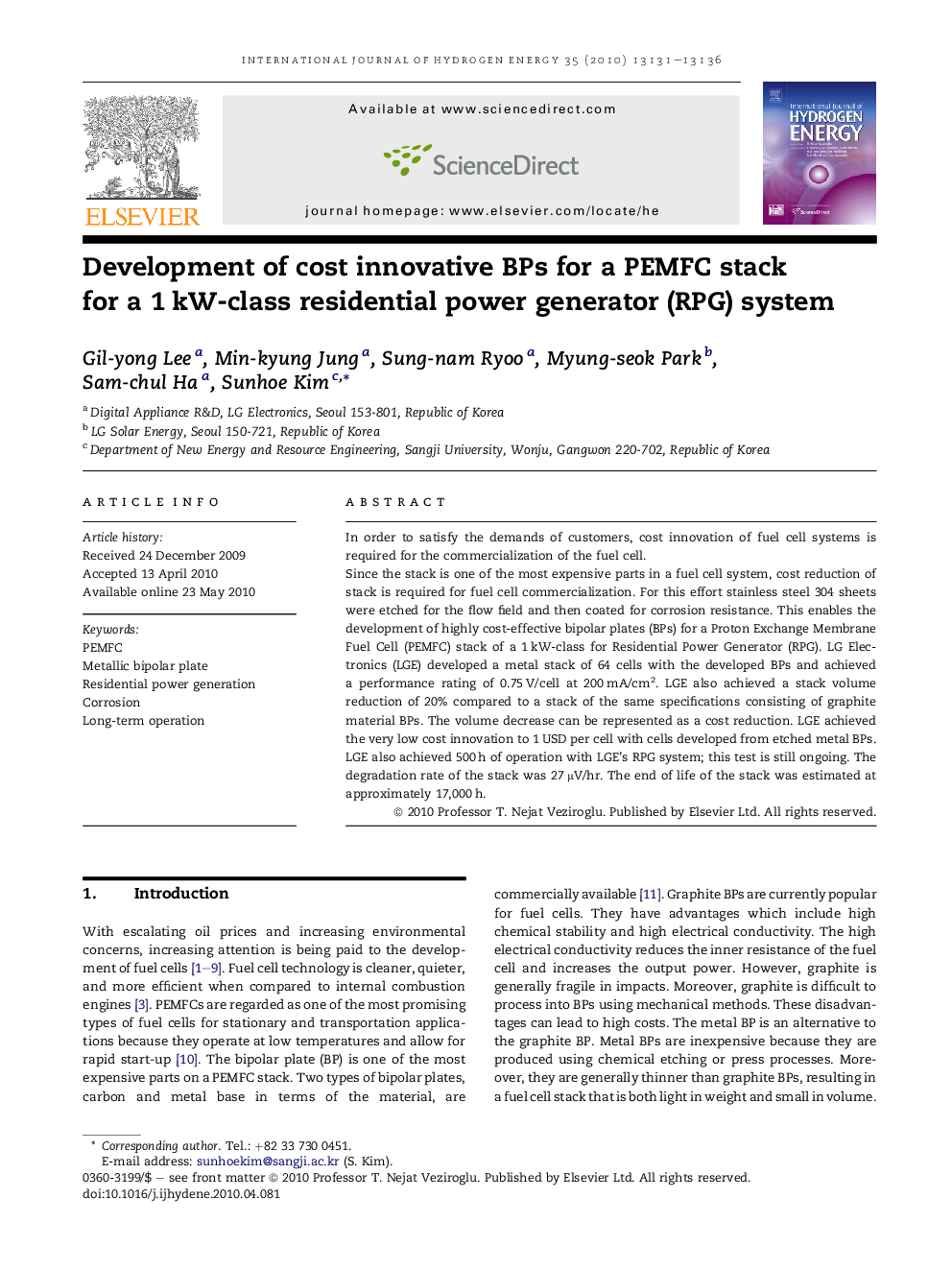| Article ID | Journal | Published Year | Pages | File Type |
|---|---|---|---|---|
| 1279966 | International Journal of Hydrogen Energy | 2010 | 6 Pages |
In order to satisfy the demands of customers, cost innovation of fuel cell systems is required for the commercialization of the fuel cell.Since the stack is one of the most expensive parts in a fuel cell system, cost reduction of stack is required for fuel cell commercialization. For this effort stainless steel 304 sheets were etched for the flow field and then coated for corrosion resistance. This enables the development of highly cost-effective bipolar plates (BPs) for a Proton Exchange Membrane Fuel Cell (PEMFC) stack of a 1 kW-class for Residential Power Generator (RPG). LG Electronics (LGE) developed a metal stack of 64 cells with the developed BPs and achieved a performance rating of 0.75 V/cell at 200 mA/cm2. LGE also achieved a stack volume reduction of 20% compared to a stack of the same specifications consisting of graphite material BPs. The volume decrease can be represented as a cost reduction. LGE achieved the very low cost innovation to 1 USD per cell with cells developed from etched metal BPs. LGE also achieved 500 h of operation with LGE’s RPG system; this test is still ongoing. The degradation rate of the stack was 27 μV/hr. The end of life of the stack was estimated at approximately 17,000 h.
